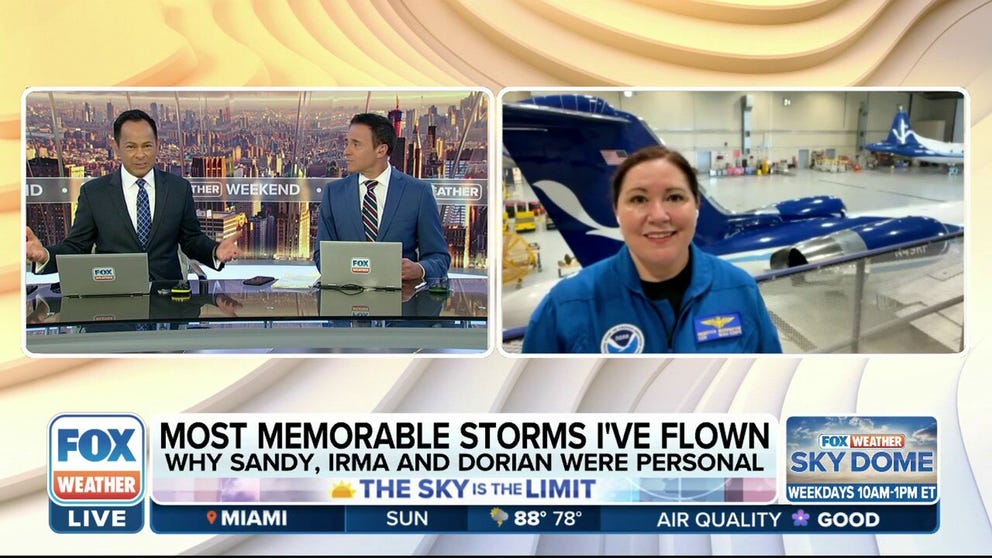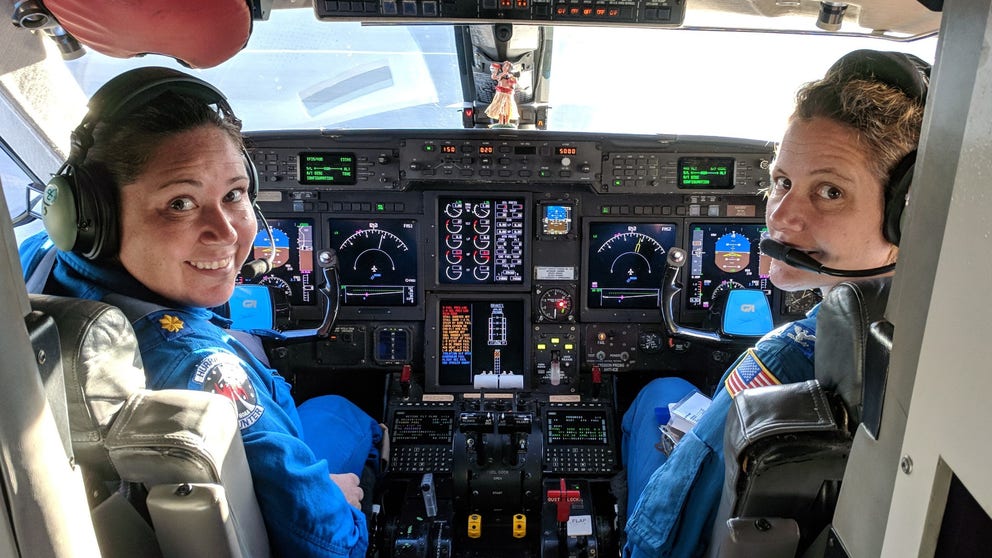‘I get excited by storms’: How hunting hurricanes became Rebecca Waddington’s calling
NOAA pilot and Hurricane Hunter Commander Waddington flies above storms to provide accurate, life-saving forecasts
How hunting hurricanes became Rebecca Waddington's calling
Commander Rebecca Waddington reflects on her path to becoming a NOAA Hurricane Hunter.
We’ve all been there. You’re in a plane and turbulence strikes for a few seconds. Your stomach lifts and you might even grab onto your armrests until the plane ride calms down.
Now multiply that by a thousand. And rather than flying over a little turbulence, you’re flying over some of the most vicious storms on the planet: hurricanes.
For one woman, this experience is just another day at work. She flies toward storms for the sake of furthering science — and, most importantly, for the sake of saving countless lives.
From land to sea to sky
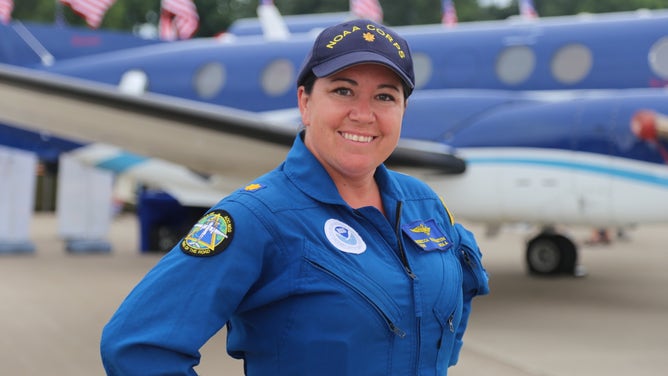
Commander Rebecca Waddington in 2016, with a King Air aircraft in the background.
(David Hall / NOAA)
"I'm a big weather nerd — I get excited by storms," said Commander Rebecca Waddington, a Gulfstream-IV pilot and Hurricane Hunter for the National Oceanic and Atmospheric Association's (NOAA) Hurricane Hunters.
NOAA Hurricane Hunters like Waddington fly into hurricanes to collect weather data. That data is then used by researchers and forecasters to better understand the storms and to make accurate predictions about them.
"I don't want hurricanes to come, but I do enjoy being able to be up there and give you that valuable data," Waddington said.
Waddington’s path to studying hurricanes began where hurricanes rarely ever happen: her home state of California.
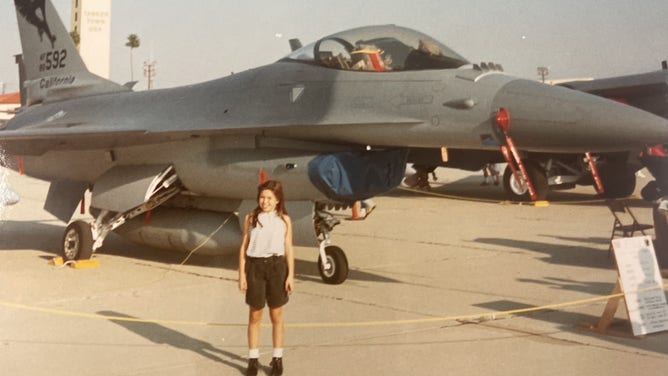
A young Waddington smiles as she stands in front of an F16 aircraft.
(John and Debra Waddington)
"I'm along the lines of 'You want what you don't have'," she laughed. "I wanted to study the most severe weather, so I went to school to become a meteorologist."
While learning about severe weather, Waddington also flirted with the idea of becoming an oceanographer.
"I looked at volunteer opportunities to go to sea, and I actually stumbled upon the NOAA Corps," she said. An active duty component of the organization, the NOAA Corps operates the ships and aircraft used for NOAA research.
LEARN HOW YOU CAN PURSUE A NOAA CORPS CAREER
As a NOAA Corps volunteer, Waddington fell in love with the sea and was inspired to become an officer and conduct oceanic research.
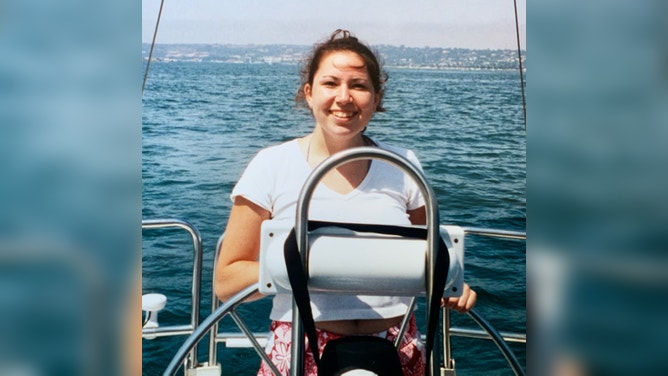
The sun shines on a young Waddington as she steers a ship.
(John and Debra Waddington)
She was placed on her first NOAA Corps assignment, working on a vessel based in Hawaii, which led to her "dream" job as a storm surge modeler at NOAA’s National Hurricane Center.
"I was there for three years and just really learning the ins and outs of everything they do, the important forecasts they put out," she said.
One of those things she learned helped her to decide on her next career move.
"After my assignment was up at the National Hurricane Center, I started thinking about what I want to do, whether it was go back to sea or do something else — and an opportunity presented itself to apply for the aviation program," she said.
It was upward and onward from there.
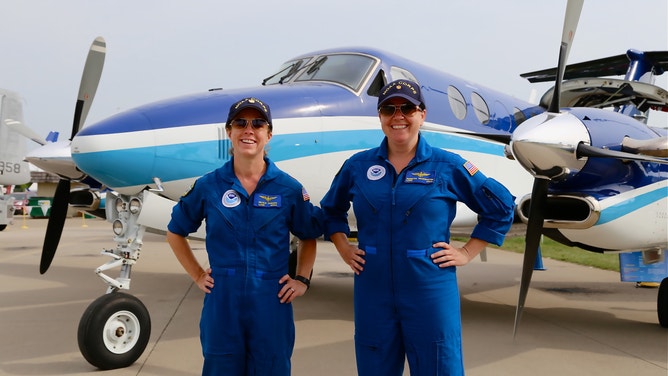
Waddington (right) stands in front of a NOAA King Air 350 CER in Oshkosh, WI in July 2015.
(David Hall / NOAA)
She took flight, piloting an aircraft called the King Air for five years. Afterward, she went on to her next assignment, which was based at NOAA’s Aviation Weather Center.
"At that point, I was combining my two loves — ‘I love weather, I love flying. This is perfect,’" she said.
Waddington was then upgraded to the aircraft she pilots today, the Gulfstream-IV Hurricane Hunter.
Fly like a G-IV

Waddington climbs into the Gulfstream-IV (G-IV) aircraft.
(NOAA)
As a Hurricane Hunter, Waddington applies her meteorological expertise gained by studying weather on land, at sea and – as a Hurricane Hunter – from the sky.
NOAA's fleet of Hurricane Hunters consists of three aircraft: two are WP-3D Orion aircraft ("P-3"), and the third is the Gulfstream-IV ("G-IV") jet, which Waddington flies.
According to Waddington, the P-3 aircraft fly at about 10,000 feet. Likened to a rhino, the P-3 are large and tough and are capable of flying through the eyewall of a hurricane, the most intense part of the storm.
"They are getting beat up, but getting extremely valuable data for the forecast," Waddington said.
Waddington’s G-IV flies at a higher level of the hurricane — up to about 45,000 feet — and is more agile.
"The G-IV is more like a cheetah. It is very, very fast," Waddington said. "By being as fast as we are, we can cover a lot of area."
"So when we're tasked to research a storm, we're not only looking at the storm itself but also the environment the storm is moving into," she added. "What that does for us is tell us how the storm's movement will be affected."
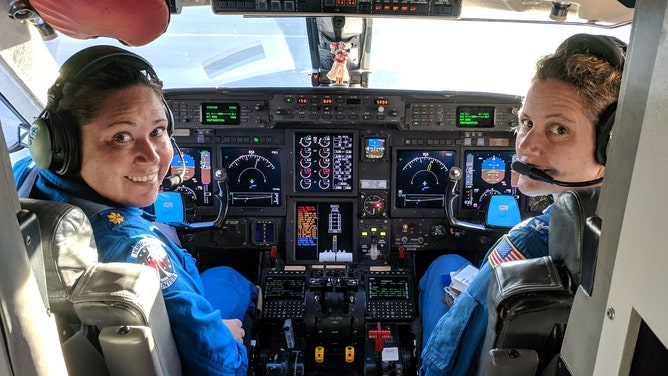
Waddington (left) and CAPT Kristie Twining (right) in the cockpit of NOAA's Gulfstream-IV Hurricane Hunter jet.
(CDR Brad Fritzler / NOAA)
Both the G-IV and P-3 gather data by releasing tube-shaped devices called "dropsondes" into the hurricanes. Waddington describes dropsondes as being slightly larger than a Pringles can.
After they drop from the aircraft and unravel an attached dropchute, the tubes fall straight into the storm.
"Inside this tube are several instruments. They measure temperature, dew points, derived wind speed and direction, atmospheric pressure — all of that information is very important input and forecast models," she said.
The science behind hunting hurricanes
Commander Rebecca Waddington explains the work of NOAA Hurricane Hunters like herself. One aspect of their research involves releasing devices called "dropsondes" into hurricanes to gather data about the storms.
As the dropsonde falls, it collects information and then transmits a radio signal back to the aircraft.
Scientists onboard the aircraft then review the transmitted data in real time. Once the data is verified, it is sent out to research centers, which use the information gathered to create accurate models for weather forecasts.
LOOK INSIDE THE 'FLYING LABORATORY' USED BY HURRICANE HUNTERS
Much like the instruments in the dropsondes and on the aircraft, the components of the flight team are what make this harrowing, information-gathering process possible.
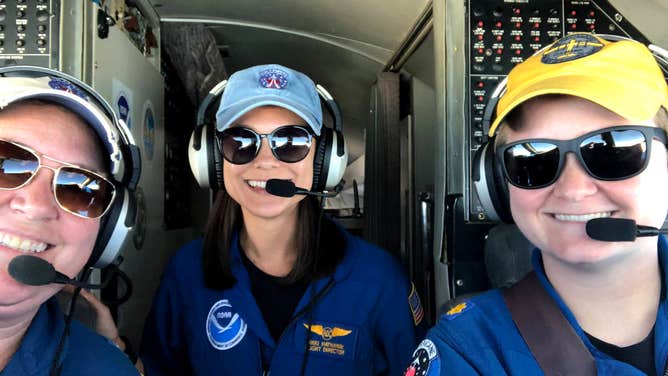
Waddington (left) with Flight Director Nikki Hathaway and Lt Cmdr Lindsey Norman in a Gulfstream-IV.
(NOAA)
"You just rely on your team so much," said Waddington, whose team includes a co-pilot, sometimes a third co-pilot (for situational awareness), two meteorologists, in-flight technicians and engineers.
"It's everybody working together to make the mission work."
Dream team
While Waddington credits her flight team for their mission’s success, when it comes to her personal and professional success, she goes back to her roots.
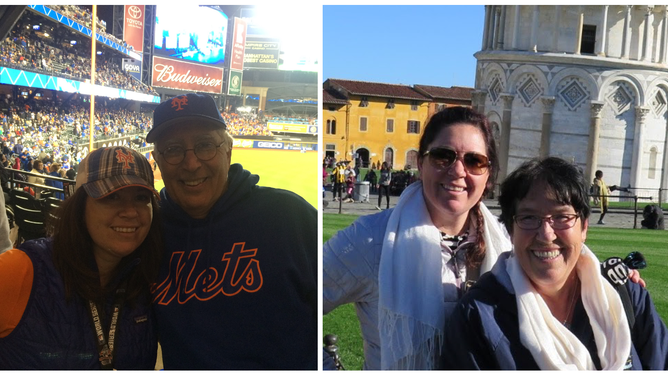
Waddington and her father at the Mets World Series game (left), and with her mother by the Leaning Tower of Pisa in Italy (right).
(Rebecca Waddington)
"I've got to give credit to my parents here," she said, adding that her father worked as an aeronautical engineer with the Air Force. "My entire life, they've encouraged me to try new things and to be open to it because you never know what's going to speak your language."
"That's probably the best piece of advice I can give anybody is start with 'yes'. If the answer then becomes 'no', because if you've evaluated different aspects of it, that's okay — but start with 'yes' because you don't know where it's going to lead you."
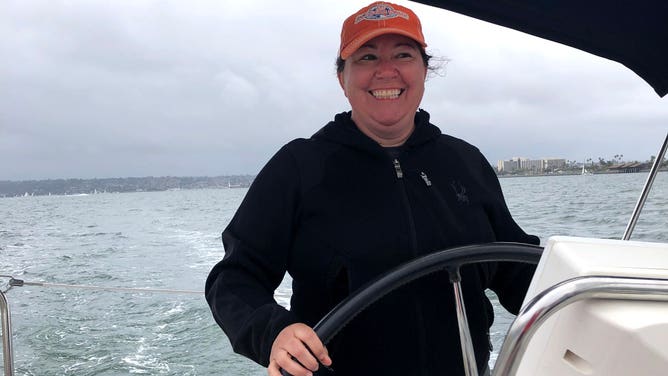
When she's not flying, Waddington enjoys being back at sea.
(Rebecca Waddington)
With her "yes" approach, Waddington unknowingly found her way to making history.
In 2018, during her first hurricane mission flight, she and Captain Kristie Twining piloted the first all-female flight crew into a hurricane.
"We didn't realize how significant that was until afterwards," she said. "It got picked up by a lot of news channels because it's such a rarity."
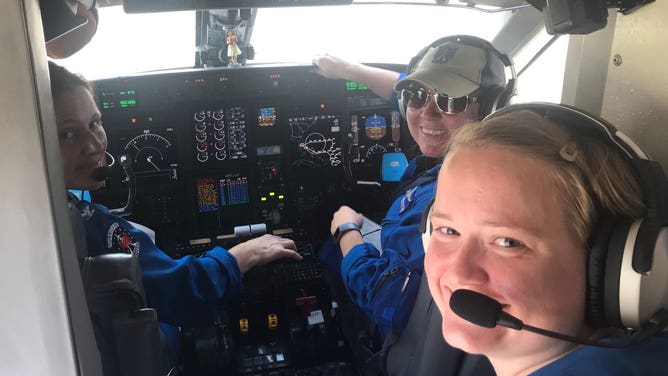
Waddington and her colleagues during NOAA's first all-female flight.
(NOAA)
"It's something that we never realized was so rare because we've been very fortunate in NOAA — that while female aviators are a minority in NOAA, we've never been treated any differently than our male counterparts," Waddington said. "We are honestly a big team here, and we all support each other and that's really great."
For Waddington, being a woman hasn’t made much of an impact on her career in the weather sphere.
"Weather doesn't care if you're male or female — it's going to hit you the same," she added.
Soaring to new heights
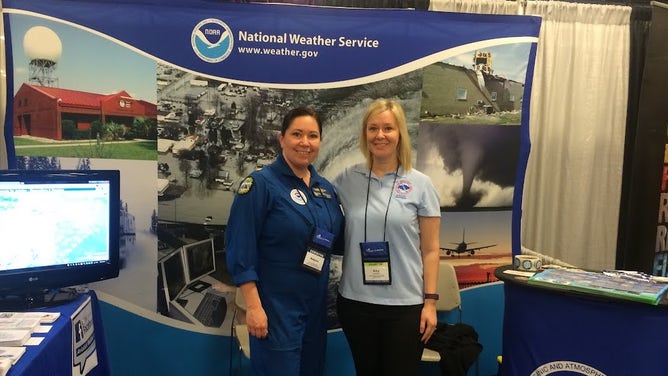
Waddington representing the National Weather Service at a conference.
(NOAA)
At the end of the day, Waddington sees her work as something greater than herself.
"One of the really cool things about flying the Gulfstream-IV is seeing the impact it has on track forecasts of the storm," she said.
By flying into the storm, gathering data and inputting that data into weather models, Waddington and her fellow NOAA Hurricane Hunters help create more pin-pointed forecasts about a storm’s path.
"That is so valuable because that is the difference between telling somebody that they need to evacuate versus telling them that they're safe to stay where they are," she said. "That just gives you so much job satisfaction of knowing that what we do matters."
